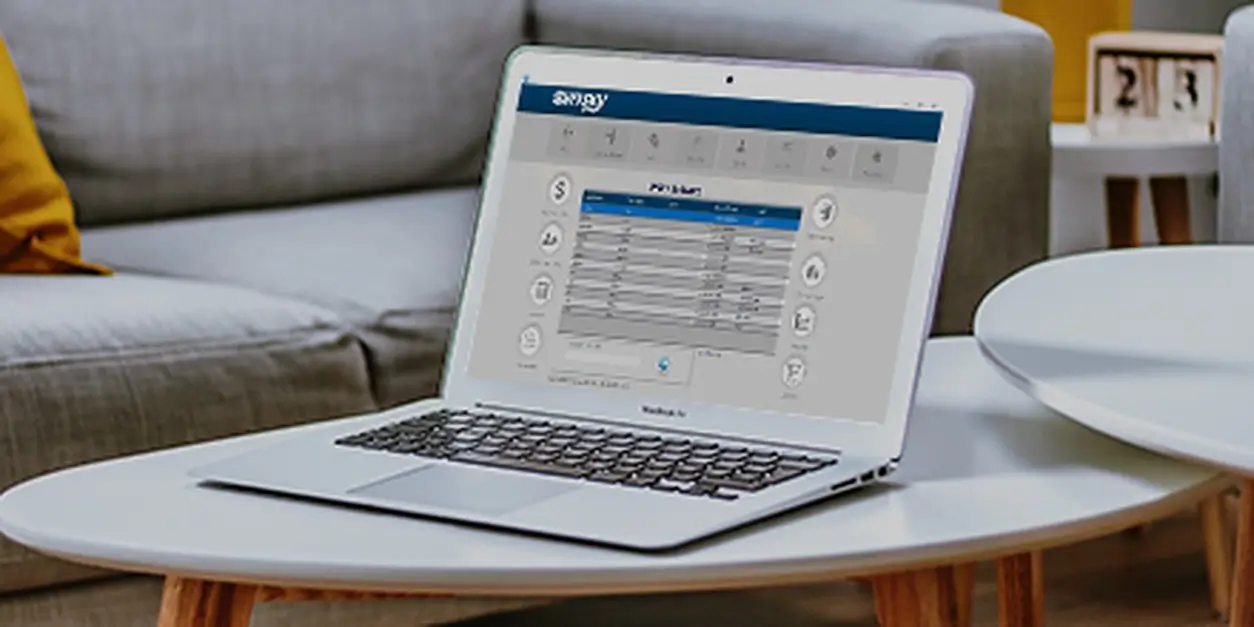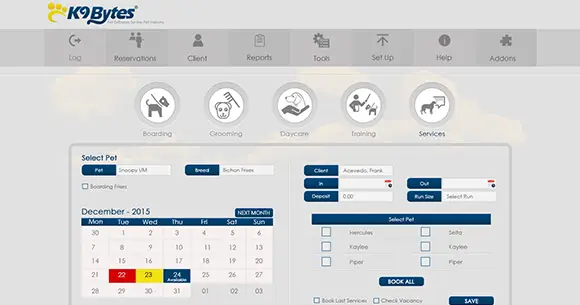Dogs are emotional beings. They also feel anxiety, fear, or stress, just like humans. When leaving them in a boarding kennel, they may suffer from depression once introduced to unfamiliar surroundings, especially when their owners are not around. You may notice that other dogs quickly enjoy socializing with fellow animals, while others hesitate and stay in one corner. As much as you want to know what’s on their mind, dogs cannot tell you what’s bothering them.
As a daycare business, your attendant must help the dogs remain calm and relaxed so that they have a great time. But when issues arise, how will you resolve them or prevent them from happening?
Fortunately, there are techniques for recognizing dogs’ emotions by observing their body language and behavior. Recording this information in your pet kennel software can also help you monitor your dog’s behavior in the future.
This blog compiled a list of behavior tips for dog daycare and kennel assistants working with their canine clients. Let’s check it out.
#1. Approach Them Patiently and Friendly
Even a kid needs a friendly approach when afraid in a new environment. For your fur clients, you may begin by quietly and slowly walking with your hand out while speaking softly. You may also call them by name or offer a treat to help calm them down. This method is crucial to show them that you are not a threat.
It may take a while before they respond; as daycare personnel, patience is essential. You will know how it feels by these responses:
- If the dog seems stressed out and hesitant to engage with you, it may see you as a threat. Be vigilant, as it may bark, growl, or bite you as a warning to go away. Or, in most cases, it might retreat away from you.
- It will jump all over you if it responds positively, showing excitement and happiness.
- If your fur client is visibly nervous and dislikes engaging, don’t force them. Instead, let it alone calm. After a peaceful moment, you can try to entice him by throwing treats on the floor and calling him again by his name. Once it realizes you are safe, it will eventually come to you and mingle with fellow dogs.
#2. Notice the Dog’s Body Language with Pet Kennel Software
Animals may not be able to talk, but they can express feelings through body language. Therefore, daycare attendants and kennel workers need to understand how to read a dog’s body language. Dogs also communicate with humans through facial expressions and posture.
Here are some typical dog languages and their meaning:
Posture
- Cowering or hunched closer to the ground – how dogs stand and distribute their weight shows their emotions. If you see them like this, in most cases, they are afraid of something.
- Rolls and shows stomach – typically, you might guess that they ask for a belly rub, but in some cases, it could also mean that they feel significant stress and anxiety.
- Shifting weight with a high twitching tail—When a dog moves backward and forward continuously with some gestures, it indicates aggression. The dog does it to show other animals that it is superior.
- Chest down, bum up – dogs do this like they are about to run in a marathon. But this indicates that they like to play with other dogs or people.
- Nonstop panting—if the dog has not come from playing and running, he might be stressed out. It will likely occur when he’s not petted to calm down.
- Prolonged yawning – your canine clients will yawn when bored or tired. However, it could indicate stress when you notice it is intense and prolonged.
- Snarling or growling – A smile or submissive grin- is often a sign of fear.
- A high, stiff body and tail could mean two things: they are alert and highly aroused, and they display dominance.
- Relaxed, soft, mouth half-open – he is happy and chilled—the perfect mood for playing.
- Soft, relaxed, and fluid movements – he’s chilled and happy with the situation.
If possible, you want every dog in your care to enjoy its stay. While this is far-fetched, you have the power and knowledge to avoid potential problems. With these dog posture tips, you can do so.

Tail Movements
When a dog’s tail wags, people typically think it signifies happiness or friendliness. However, it is not always the case. Dogs also use this body language as equivalent to a smile used by a person. Dog kennel Software does that when someone is around other animals or humans. Otherwise, they will not give their normal wags, just like someone who doesn’t talk and smile at a wall.
Wags might mean happiness, but they can also indicate insecurity, fear, social challenge, frustration, or a warning that says, “Don’t try to come near me if you don’t want to get bitten.” Their emotions can be unclear, but you can translate them by their speed, breadth, direction, and position.
- A slight wag, with a small breadth, is typically meant as a greeting like “hello human” or “Hi, I’m here.”
- Broad wags with hip movement are friendly and the closest to the famous concept of happiness wagging. They can also decipher the message “I am grateful” or “I will not harm or threaten you.”
- A slow wag with a half-staff tail is neither a high nor a low position and indicates insecurity. Compared with other signals, dogs feel less social with this gesture.
- High-speed and tiny tail movements indicate that the dog is up to something, such as running or fighting. When someone holds the tail while shaking, it could be a sign of an active threat.
Raised Hackles
People get goosebumps involuntarily, and so do dogs. When you see a dog with its hackles raised, it indicates it is active and on high alert. Lifted hair on their neck and back could be a response when feeling:
- Afraid
- Stressed
- Dominant
- Insecure
- Surprised
- Excited
- Uneasy
- Very curious
Dogs involuntarily do this when their nervous system automatically causes piloerection across the dog’s back and neck. When this sign occurs, keeping calm and diverting attention from stressing them is essential. If they become aggressive, try to take them away from the situation.
Eyes
Just like humans, dogs can express their feelings through their eyes. When you look into their eyes, you probably attempt to decode what’s on their mind by how they look at you. When you see those puppy eyes, you can quickly tell they are begging or showing love and affection. But here are kinds of dog’s eye signals and their meanings:
- Soft and relaxed lids – The dog squints, indicating a peaceful and happy dog.
- Hard and cold eyes: In contrast to the soft eyes, you may notice the dog’s eyes seem unwelcoming when guarding a toy or food, or being aggressive. It can also stare for a long time, which shows a warning.
- Avoids eye contact: They tend to look away when stressed. Though misinterpreted by many as thinking that the dog is stubborn, in reality, dogs show anxiety.
- Reveals their sclera: Dogs show the white on their eyes when they feel stressed or worried. For instance, they think some dogs or humans will get their bone or toy.
Facial Expressions
Dogs can show emotion through their faces. Interestingly, they have approximately 100 facial expressions, mostly shown with their ears. When they listen to you, they tend to focus on hearing how you communicate your message to them. They are too aware that eye contact between them and a human shows comfort and trust.
Here are some typical facial expressions and their meanings:
• Yawning
They feel stressed and try to comfort themselves. You can help by yawning near them, and they probably yawn back.
• Lip licking
They usually do this after every meal, but know that they do this too when feeling nervous. You can notice it if dogs didn’t come from eating or drinking. Chances are, a dog is feeling anxious.
• Smiling
Dogs have various kinds of smiles, just like humans. Thus, it can’t be easy to decipher their emotions with this. Combined with a submissive grin where the front teeth are out, it signals a warning and aggression. In contrast, a dog smiles when they shows a loose posture.
Watch the Dog’s Behavior
Your canine client’s body language is an excellent emotional state indicator, and so is their behavior.
You might notice a dog that spends the whole day hiding and alone; they are probably afraid or stressed. To help them calm down, you could try these strategies:
- Put a thundershirt on the fearful dogs—other dog trainers have proved this; this shirt has a soothing effect, like giving someone a hug. Thus, it helps calm anxious dogs.
- Place pheromone diffusers in the area – Pet kennel software studies reveal that this diffuser releases air substances that soothe animals, including dogs. Moreover, it can help diminish unwanted behavior when an animal is experiencing stress.
As a kennel and daycare attendant, being vigilant of these hyperactive dogs is essential. An overly aroused dog might be running around more than usual. This behavior of dog boarding shows that they have a high level of stress and don’t know how to handle it. To help them bring it down, you could consider going for these activities that require your fur client to focus:
- Play attention-getting games to divert their focus to the activity.
- Work on skills and training in calm surroundings to drop their arousal level.
This behavior could also mean jealousy, as some dogs are possessive. Since you care for many dogs, you will share your time and attention with many dogs.

How Can a Pet Kennel Software System Help You Monitor Pets in Your Facility?
Keep Track of Incidents
Monitoring different breeds with different behaviors is a challenge when not using a kennel software program. When searching for a pet’s behavior using pen and paper or MS Suite, it isn’t easy to report.
This task is why an online booking software for a kennel is beneficial. Even when searching with thousands of pet names, you can easily find the exact date and pet details.
Label Dog Behavior
Dogs exhibit different behaviors that can be enigmatic. With dozens of dogs you are handling, labeling and categorizing their behavior is essential so your team member can prepare for unexpected situations.
A kennel connection software helps you quickly track dog behavior for every pet in your care. The system provides three incident labels: positive, neutral, or negative. You can use this information when faced with a similar situation; this time, you know what to do.
Help Track Early Signs of Illness
Knowing how a dog behaves will help you determine if it has an illness. This could benefit you and your facility’s infection control.
Having complete details of the dog’s illness, you could consult with a vet to confirm its condition. The doctor may ask you questions about the incidents, so it is best to record all the information in a cloud-based system such as pet booking software. This way, you don’t have to worry that the notes will disappear. You can always look for them using any device.
Help Communicate with the Pet Owner Easily
There are situations in which a dog’s behavior is out of your control. Before it causes more problems, it is best to contact its owner. You can quickly reach out to them using dog management software. You only need to input their or their pet’s names with minimal taps.
A Handy Pet Kennel Software for Your Daycare and Kennel Businesses
Though you hired trained and animal-loving personnel, using reliable pet kennel and training software for a manageable and successful pet care business pays off. It will save you time, help you increase the bottom line, assist you in building a good reputation, and provide many other benefits you don’t want to miss.




